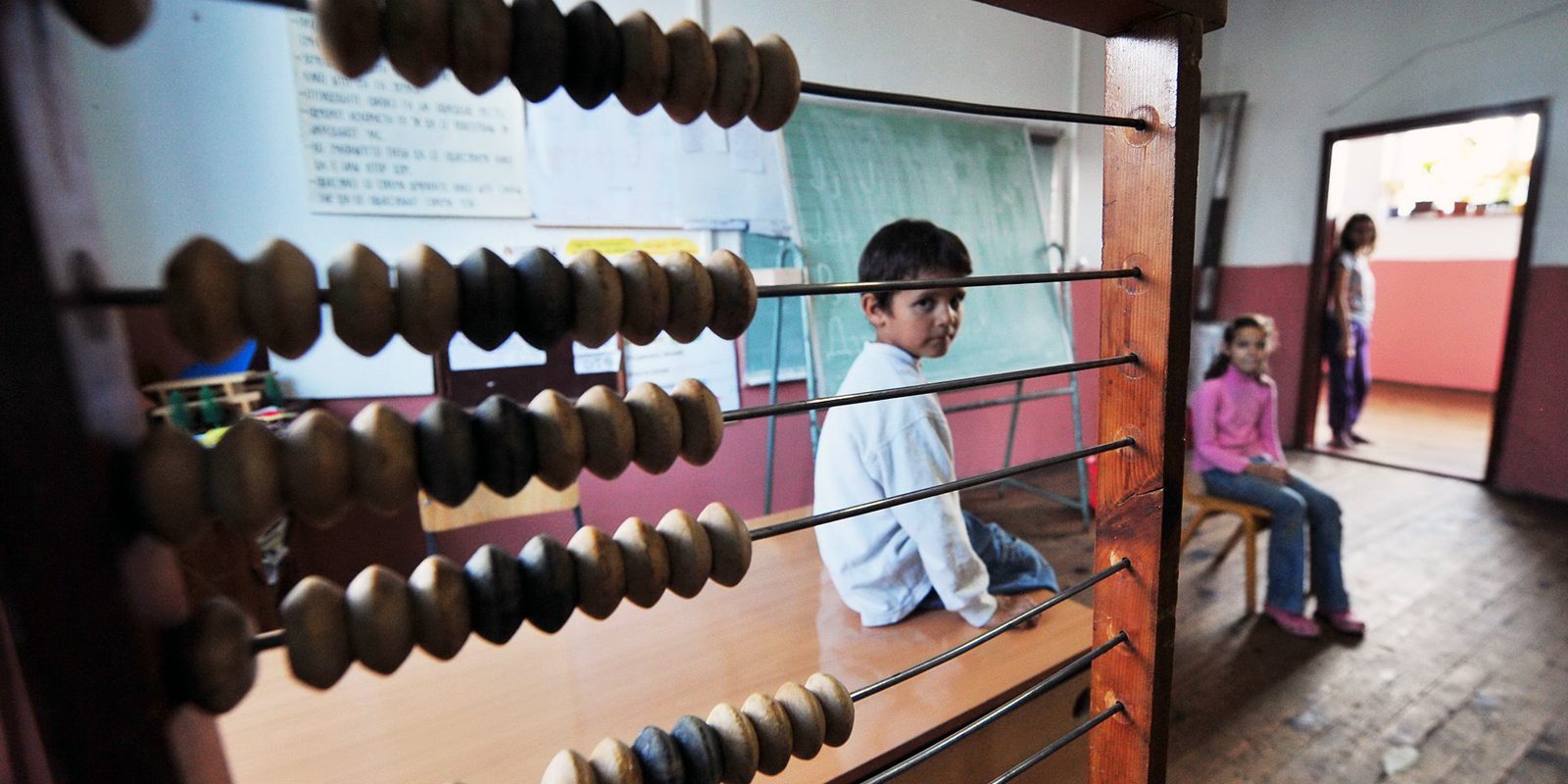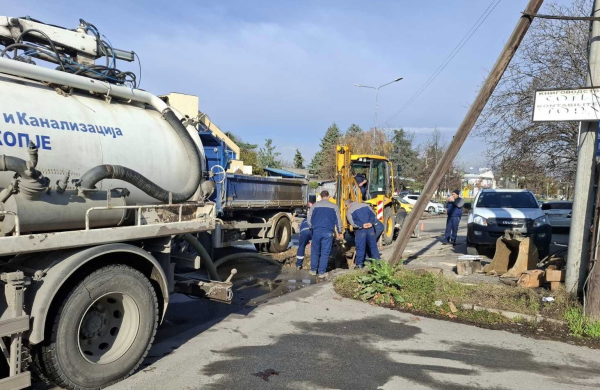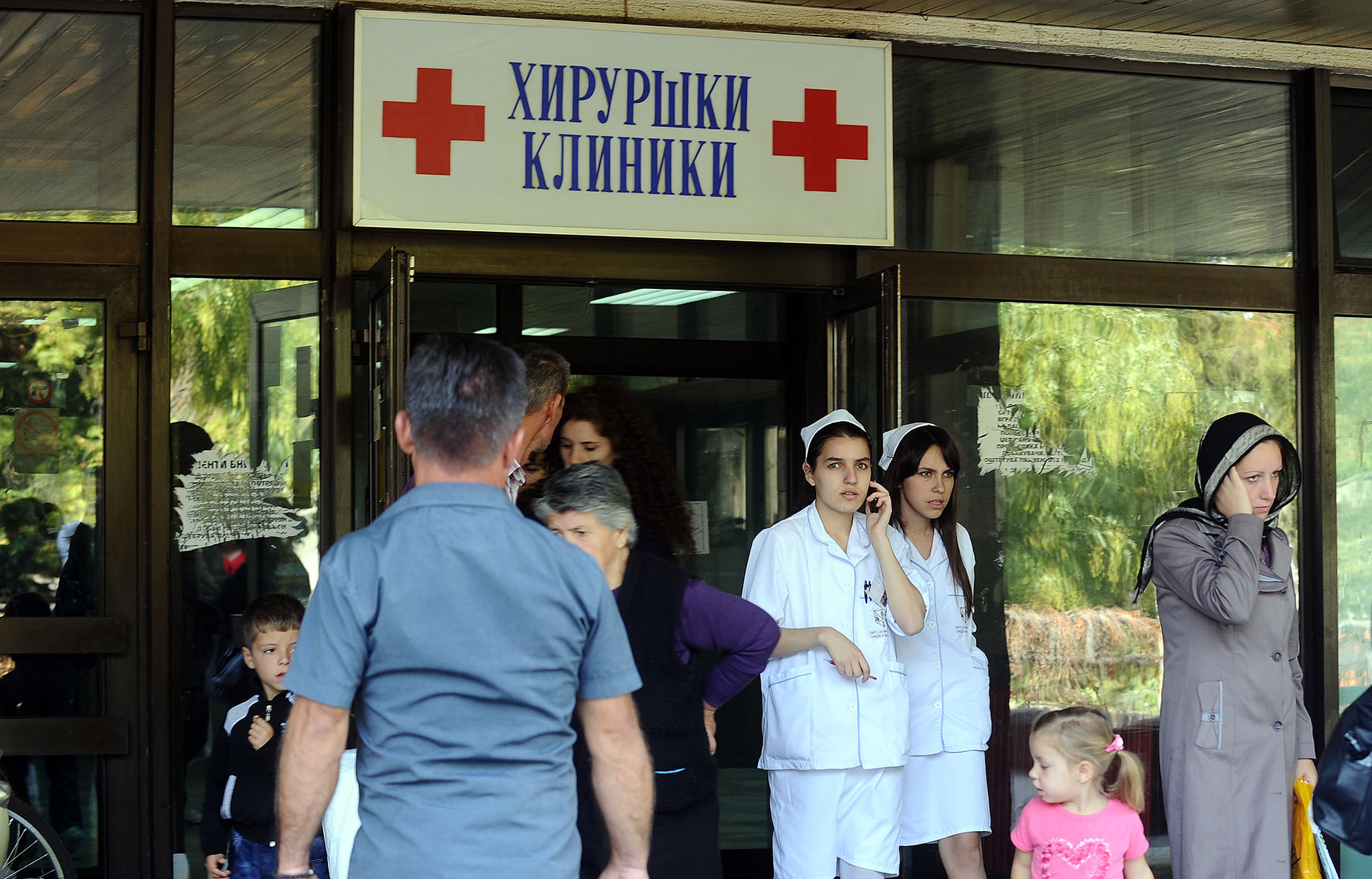In 15 years, Municipality of Novo Selo, in the vicinity of Strumica, will have to close the doors of its three primary schools if the trend on decreasing number of pupils and first graders that has plagued villages in this region continues.
In only 10 years, the number of pupils and first graders has been halved, i.e. reduced by 50%, which is due to the natality decline, mass migration of young married couples towards Strumica or Skopje, and immigration abroad in search of better living conditions.
10 years ago, in the school year 2006/2007, all three schools in this municipality (“Kliment Ohridski”, “Manus Turnovski” and “Vidoe Podgorec”) had 1,134 children enrolled in primary education, but last year this figure dropped to 609 pupils. The number will continue to decrease because every new generation has less and less first graders until they all disappear. In the school year 2007/2008, there were 160 first graders and last year their number was only 51.
Database on the 10-year fluctuation in terms of the number of pupils in all 80 municipalities and the City of Skopje, developed by the Center for Civil Communications on the basis of data from the State Statistical Office (SSO), shows that every year the total number of pupils enrolled in primary schools across the state is decreasing. It is believed that factors contributing the most to this phenomenon include decreased natality and migration abroad.
In that regard, the example of Ivan and Evica is representative of the situation in which the parents – not seeing any future for them and their children – leave the state and remain abroad forever.
Several years ago they resigned from their jobs that did not correspond to their vocational professions, packed their bags, left Skopje and moved to Australia. They took their two-year old son Ivan, who would have been first grader this year at one primary school in Skopje.
“I worked as barmen and my wife at a boutique. We both have higher education degrees. Our monthly income did not allow decent living, so we left for Australia. It was not easy at the beginning, but now we both have stable and well-paid jobs. The education system here is much better than the one in Macedonia and there is major difference between the school our son attends here and the primary school ‘Goce Delcev’, formerly named ‘Lenin’, where I completed my primary education”, says Ivan.
According to official data from the State Statistical Office (SSO), within a period of only ten years, the number of pupils in primary schools has been reduced by incredible 45 thousand, i.e. by around 20%. On the other hand, the Ministry of Education and Science (MES) claims that the number of pupils is increasing from year to year.
In the school year 2006/2007, there were 231,497 pupils of all grades in the Republic of Macedonia. Nine years later, in the school year 2015/2016, all schools in the Republic of Macedonia have total of 185,992 pupils. In less than one decade, the number of pupils in primary schools across the state has been reduced by more than 45 thousand children.
When the number of “lost” pupils is divided by the time period covered, i.e. 10 years, it could be concluded that, on daily basis, Macedonia is losing 12 pupils.
In the school year 2007/2008, the Government’s new project introduced nine-year primary education and last summer the first generation under this system completed their primary education. Different data exist about the number of pupils from the first generation that completed nine-year primary school.
“Mandatory nine-year primary education was introduced in the school year 2007/2008. The first generation of pupils which completed this education accounts for 21,865 children”, said Ardijana Kamili from MES.
Nevertheless, according to the competent ministry, the number of pupils in Macedonia is not declining:
“According to data of the Ministry of Education and Science, compared to the last several years, the number of enrolled first graders is marked by tendency of increase”, told us Kamili.
According to data from the State Statistical Office, total of 22,403 first graders started their primary education on 1st September 2007. According to same source, nine years later that generation accounted for 22,217 final-year pupils, but MES claimed that their number is 21,865 pupils. This leads to the conclusion that, over the period of nine years, only from this generation 186 or 538 primary school pupils have left the state, together with their parents. Namely, if these pupils migrated to another place in Macedonia, they would still be included in MES data and SSO statistics.
MES’ preparations for the next school year and plan of activities, i.e. need assessments for new classes, trained staff or schools, are based on the general records on newborns.
“Every year, the State Education Inspectorate is presented with data from the Central Police Service about children born in the year that corresponds to their age for starting school”, say people from MES.
Nevertheless, the exact number of first graders in each municipality cannot be established with certainty due to the internal migration process village to town and town to town, as well as due to mass immigration abroad.
According to our sources, the main problem in establishing the accurate number of pupils and development of statistics is the failure on the part of primary schools to timely update data, because they sometimes purposefully fail to report pupils that no longer attend classes, as that would imply less funds disbursed from the municipal and the state budget.
“Just as young people leaving Macedonia fail to report their immigration, but are obliged to do so, schools as well avoid reporting pupils that have been taken out of school. This is due to the fact that the municipality pays certain amount of funds to the school on per student basis and the school also benefits from state budget funds, depending on its location in urban or rural environment, or whether it has enrolled children with special education needs”, says our collocutor, a senior officer at MES.
Ana Mickovska Raleva from the Centre for Research and Policy Making (CRPM) believes that there must be more data on migration trends and migrant profiles in order to confirm the extent to which immigration also includes pupils.
“The overall trend on declining number of pupils per generation (first to eighth/ninth grade) could be somewhat explained with the trend on immigration from Macedonia. According to the State Statistical Office, on annual basis 700-800 people immigrate, half of them are married or in reproductive age, although the real number of immigrants is probably much higher, because not all of them report their moving from the state. Nevertheless, data on migration trends and profile of immigrants are not sufficient, in order to be able to claim with certainty to which extend does immigration cover pupils as well”, explains Raleva.
At the moment, there are three private primary schools in Macedonia: “Jahja Kemal”, whose destiny at the moment hangs in the balance due to the newly emerged political situation in Turkey and relations with Macedonia; primary schools “Nova” and “Woodrow Wilson”. They are attended by around three hundred primary school pupils in all generations.
The number of pupils in primary education has been reduced in 78 from 80 municipalities in Macedonia
The natality decrease and the so-called “white plague” have affected almost all municipalities in Macedonia. The myth whereby municipalities with dominant Albanian population are marked by increased natality or higher number of school children has also fallen. As is the case in Eastern Macedonia, in these regions as well schoolrooms are empty or almost empty. Several pupils of different grades are accommodated in one classroom and one teacher delivers instruction for first, second, third and fourth grade curriculum.
The perception that municipalities with dominant Albanian population are marked by natality increase is debunked with data disposed by SSO.
In that regard, indicative are data for municipalities Lipkovo, Gostivar and Debar, one rural and two urban areas.
Hence, Lipkovo – as municipality with dominant Albanian population of 27,058 citizens according to the old census – has six primary schools in several villages which, at this moment, are attended by 3,117 pupils, i.e. by 36% less compared to the school year 2006/2007 when there were 4,876 children. The number of first graders enrolled at these schools is also declining, i.e. from 513 first graders ten years ago now there are only 305, representing a decrease by incredible 40%. These 305 children are from the 2009 generation when, according to official data from SSO and MOI, there were 361 newborns in this municipality.
More and more empty chairs in classrooms – Pupils at the primary school in Siricino, Tetovo region. / Photo credit: Robert Atanasovski
Gostivar, as municipality with majority Albanian population, has three primary schools in the town and seven in the villages on its territory. According to official data, after the new territorial organization Gostivar has population of 81,042 citizens. The number of pupils in Gostivar has been reduced by 36.14%, i.e. from 10,099 in 2006 to 6,449 pupils last year. Identical is the situation in terms of pupils enrolled in first grade, as their number has been reduced by 22.5%, i.e. from 960 to 744 children.
In Debar, there were exactly 3,000 pupils in the school year 2006, but today their number is only 2,066. On the other hand, last year there were 231 enrolled first graders, which is below the number of 329 first graders that had been enrolled one decade earlier.
This trend is also reflected in data for Municipality of Karbinci, where the number of pupils at primary school “Straso Pindjur” has been almost halved. In the school year 2006/2007, there were 600 pupils and last year their number was 351 pupils. Same applies to the number of enrolled first graders which, in the same period, has dropped from 120 to 43 children. According to the State Statistical Office, Karbinci had 62 newborns in 2010 which should start school this year. Last year, this figure has dropped to 45 newborns.
This situation is not common only among small, rural municipalities comprised of several underdeveloped villages located in the countryside across Macedonia.
Comparison of official data for 2006 and for last year shows that in Resen the number of primary school pupils has decreased by 33.42%, while the number of first graders has dropped by 24.22%. Moreover, Struga has one-third less pupils, and the number of first graders has decreased by 25%. Tetovo has by 21.29% less children in primary schools and by 8.13% less pupils enrolled in first grade.
Similar is the situation in Veles, as municipality with population of 55,108 citizens according to official information. In the town there are seven primary schools and additional three in the villages on the municipal territory. Ten years ago, schools in this municipality had total of 5,559 pupils, but last year their number was 4.441, which represents a decrease by 20%.
The magnitude of town migration could best be illustrated with data according to which the school generation of 2007/2008 in Veles accounted for 996 first graders, which leads to the conclusion that 378 children and their families have left this town in the last nine years.
Only two municipalities in Macedonia marked by increased number of pupils in primary schools are Centar – with increase by 1.74%, and Vevcani – with increase by 11.01%. Broken down by grades, the highest increase of enrolled first graders is noted in municipalities Novaci (32.14%) and Rosoman (30.77%), while in Skopje the number of enrolled first graders has increased in municipalities Aerodrom and Center, by 15.13% and 14.46% respectively.
According to connoisseurs, at least in the case of Skopje-based municipalities, this increase is due to internal migration within Macedonia and large number of people moving from the countryside to the capital.








